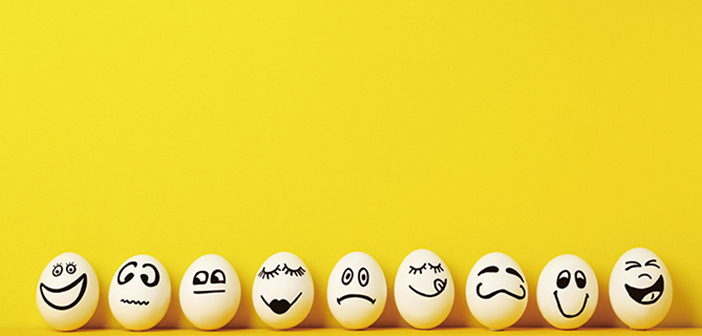A siren-style wail just rose from the living room. It sounds like “Moooommmmmy!” and signals a war is on. I hear struggling, yelling, and I can barely get my hands dried from the sink before my son (4.5) is already at the kitchen doorway in choppy tears and my daughter (6.5) is at his back, haughty and indignant. Kicking is reported. Hitting is reported. Mean things were said, apparently. On both sides.
Fighting between kids is normal, I know. So too is exasperation on the part of mothers. I want my kids to get along, of course, but my deeper desire is for my kids to understand that emotions can be controlled. They are temporary visitors to the body/heart.
“Looks like Sam and Albert are having a party in both of you right now,” I say to them, dishtowel still in my hands. This briefly pulls them from their drama and there’s a considered pause. I continue.
“Because you both let Albert the Angry in, you’re being mean to each other. Hitting, kicking, saying mean things are all not okay. And look,” I wipe a tear off my son’s cheek. “When you do those things, Sam the Sad comes and joins the party! What can we do about this?”
Yes, we named them—the feelings. There’s “Albert the Angry” and “Sam the Sad” and “Gilbert the Giggler.” Sometimes we add in “Francesca the Frustrated,” but generally the first three characters are enough to keep the scene rolling.
My daughter contests the exercise. She knows where I’m going with it but the offending chronology of wrongdoing is what she feels most warrants my attention.
“Didi kicked me first!” she declares and then she also starts to cry. I say what I always say then, that the order of acts aren’t important; what’s important is that they handle the bad feelings properly before they escalate to the point of doing mean things.
We all go to the couch. We all sit down. I’m given the play-by-play of the drama once again and I listen, concede which acts were unfair and sound too rough, but then continue to encourage the focus on the feelings rather than the specific details.
Okay, I know this is all easier said than done. As adults, we struggle with the simple concept of emotional control. Some flat-out reject its validity. Expressions like “you can’t control how you feel” or “it/he/they made me feel like this” or “feelings don’t lie” are common. But, I argue that if kids can accept this concept early, maybe they will always be psychologically more grounded than their own parents.
“Let’s close your eyes for a second,” I say and both kids are willing. “Pretend there’s really a party happening inside of you. Albert the Angry is kicking the chairs and spilling all the drinks on the floor. Sam the Sad is crying in the corner and won’t talk to anyone. Who can we invite into the party to make everyone feel better?”
Their eyes fly open when I poke them, one in each side, right in their ticklish spots. They stifle giggles but aren’t quite ready to get out of their moods.
“Gilbert the Giggler has burst into the party. And guess what? He sees the spilled drinks on the floor and he falls flat on his bum with a SPLAT!” I say this with as much animation as I can muster and poke them both again, playfully. My son laughs. I continue.
“Then he slides all the way over to where Sam is crying and splashes all those spilled drinks right up onto Sam’s nose and Sam is so surprised that her nose is wet that she stops crying!”
The kids are both engaged. They’ve stepped out of the warzone scene, emotionally. They’ve stopped crying and are listening. I take their hands.
“So, these are the feelings in you right now. Sometimes they need to be asked to leave the party. Bye Bye, Albert! Bye Bye Sam! Hi Gilbert, let’s clean this stuff up, huh? And how do we clean up feelings? We have to do nice things for each other. Sometimes we need to say ‘sorry.’ We always have to be kind. Smile. Have fun!”
I snuggle each of them into me then. They’re no longer tense. A white flag has been raised over this living room stage.
Years ago, in my study of Buddhism and meditation practice, I learned a concept that changed my life. Don’t get me wrong, it’s bloody hard to master, but it’s brilliant when it works. The concept is this: feelings are temporary like clouds passing in the sky. If you attach to them, they become beliefs. If you watch them passively and just let them pass, they will change and take on new shapes. The extension is this: yes, we can control how we feel; we can choose not to attach to the negative (or positive) feelings and this agency can, indeed, improve the quality of our lives. How so? It keeps us from the extremes of both spikes and dips. It keeps us balanced and level.
Poke, poke. Giggles elicited. Now they’re both on top of me and they’re finding my tickle spots too. I can’t help but laugh with them.
So, I’m still working on it. My kids are working on it with me. Most of the time, my feelings still rule me rather than me ruling them—reacting is so easy but stepping back and considering before responding to emotion? That’s much more difficult. Yet, when I succeed, I feel a hundred times better for it. With enough practice, reacting should become a rare occurrence and calm “emotions management” should become the norm, right? If we actively acknowledge the feelings and ask ourselves whether or not we can choose to feel differently, surely we can reject the negative spirals (especially) and let the feelings pass as innocuously as innocent clouds.
Reducing emotional complexity down to characters in a simple internal play (similar to that movie from a few years ago called “Inside Out” – very cool film!) gives us the chance to actively re-write the scripts of our human interactions in the very moment in which they are taking place. And by using this technique, there’s active acknowledgment of the existence of feelings rather than what is often advocated for children’s emotion, which is to simply stop crying and be done with it. Yet, obviously, a dismissal of emotions by no means manages them. By identifying our emotions as visitors that we can control, we can then find a path to a more peaceful existence that is neither ruled by emotion nor devoid of it.
The war play finds its act of armistice. Positive play resumes. I even get the dishes done, finally. That night when they are going to bed, my daughter asks me this question:
“Mommy, do Albert and Sam fight too?”
I pause. Does our anger fight with our sadness? Do our feelings battle each other internally as often as we individuals battle each other, externally? Most certainly, yes, but then who manages that? How can we be emotionally literate enough to distinguish which feelings are operating and why? This is another layer yet again. I take a deep breath.
“Yes, sweetheart, our feelings often fight with each other inside of us too. We can help our feelings stop fighting the way Mommy helped you and your brother stop fighting today. We just have to separate them and take deep breaths, and this will help us understand what’s happening—what we are really feeling and why. It’s just no fun getting upset.”
“And kick them out of the party,” she says, firmly. “They’re messy!”
I laugh. She’s so right about that.
 About the Writer
About the Writer
Ember Swift is a Canadian musician and writer who has been living in Beijing since late 2008. She has a daughter called Echo (国如一) and a son called Topaz or “Paz” (国世龙).

This post appeared on the beijingkids October 2018 Mental Health issue.
Photo: Adobe Creative Cloud




